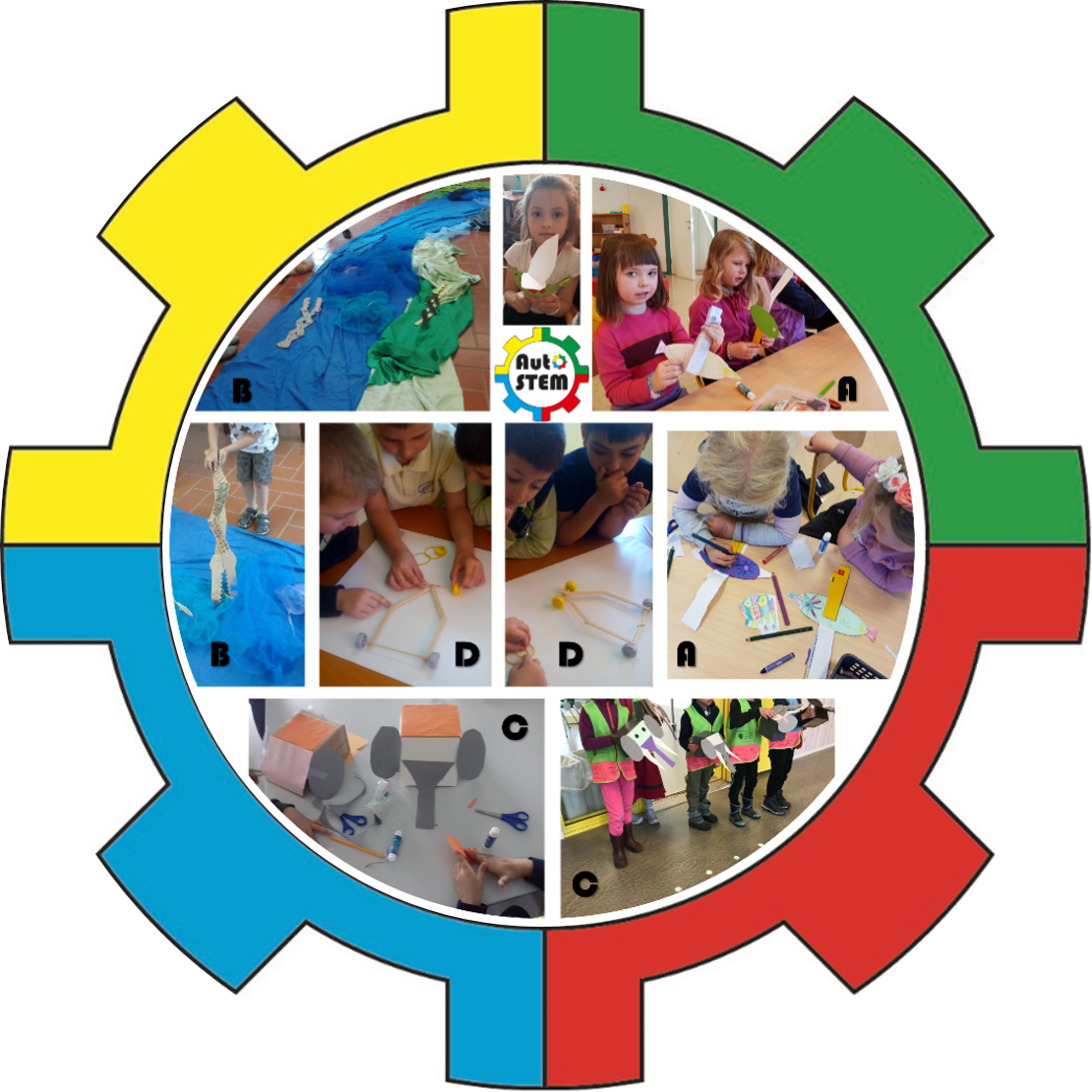Introduction
This section focuses on spontaneous cooperation between children who participated in AutoSTEM project workshops. Although no cooperative learning strategies were imposed during the workshops, spontaneous cooperation among children emerged. We will answer the following questions:
- What are the dimensions and main characteristics of this cooperation?
- How does it fit cooperative learning strategies?
- What is their specificity?
- Which features can it take and how are they associated with other individual and contextual factors?
In this section, you are challenged to learn about spontaneous cooperation, its dimensions, modalities, and factors that may influence it. To achieve this aim, tasks are presented, where you will find images, videos and articles to guide your reflection.
Learning outcomes
- Characterise spontaneous cooperation
- Identify similarities and differences between cooperative learning strategies and spontaneous cooperation
- Distinguish dimensions and modalities of spontaneous cooperation that emerge in AutoSTEM workshops
- Identify variables that were associated with different modalities of spontaneous cooperation.
Cooperation
Cooperation is a form of interaction between two or more individuals. What distinguishes cooperation from other forms of interaction is the fact that it takes place according to an objective common to these two or more individuals. Cooperative learning refers to various strategies used in the classroom, designed to create active learning and involvement among children.
One of the components of cooperative learning consists of positive interdependence, which assumes several modalities, namely, the interdependence of purposes, when group members work towards a common purpose, of the task, when “two hands are not enough”, of resources, (scissors, paper, glue, etc.), and the environment/space where the group works, which can become a unifying element It is in this sense that we consider that these forms of interdependence can be observed in the realization of the workshops, among others, without having been instructed for this type of learning.
These forms of cooperation can be named spontaneous cooperation and are characterized, on one side, by the positive interdependence between participants in order to develop the task, usually present in more structured cooperative strategies; but on the other side, they are also characterized by the locus of control of cooperation to be in the children and not on the teachers. In this scope, there are no formal instructions nor rules about how to organize the cooperation as there are in teaching and learning cooperative strategies.
Following, videos and documents about spontaneous cooperation are presented.
Video Cooperation
AutoSTEM Case study When two hands are not enough: spontaneous cooperation between children when constructing automata

This case study focuses on the analysis of spontaneous cooperation between children who participate in four AutoSTEM project’s workshops.
Reflection
Watch the videos below and reflect on teaching and learning processes by answering the following questions:
- Do you usually use cooperation strategies in class?
- If yes, who starts/initiates the cooperation?
- Who monitor it?
- How does the cooperation take place?
- What for?
When planning your own automata, take into account factors that are associated with spontaneous cooperation. When Implementing your own AutoSTEM activity, register spontaneous cooperation that may take place.
Quiz
Additional resources
References
Anderson, B. (2018) Young children playing together: A choice of engagement, European Early Childhood Education Research Journal, 26(1), 142-155, DOI: 10.1080/1350293X.2018.1412053
Knight, J. (2013). High impact Instruction: A framework for great teaching. Thousand Oaks: Sage Publications.
Hargreaves, A. (1994). Changing teachers changing times. London: Cassell PLC
Johnson, D.W. & Jonhson, R. T. (1999). Learning together and alone: Cooperative, competitive, and individualistic learning (5th ed). Boston, MS: Allyin and Bacon.

